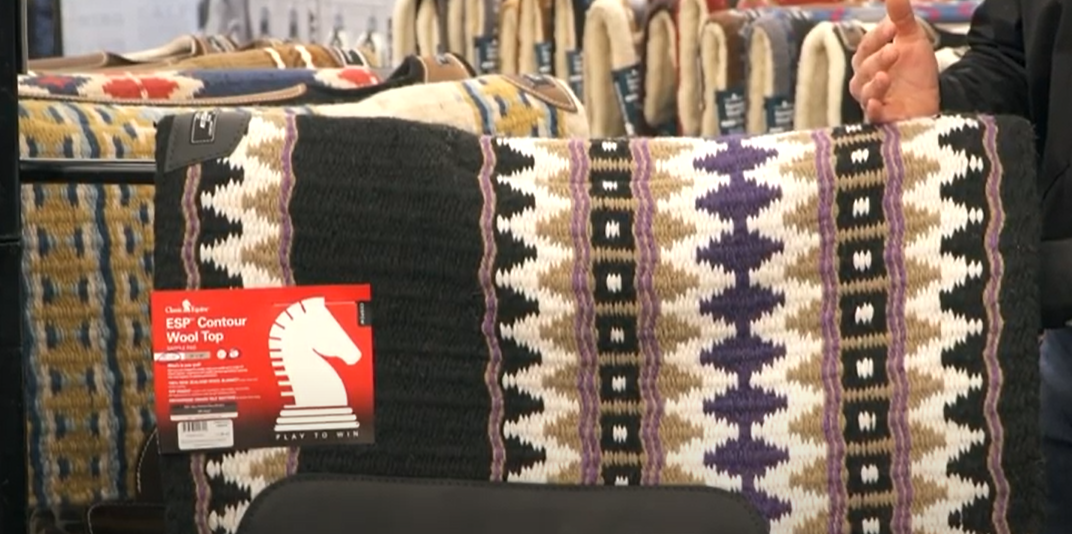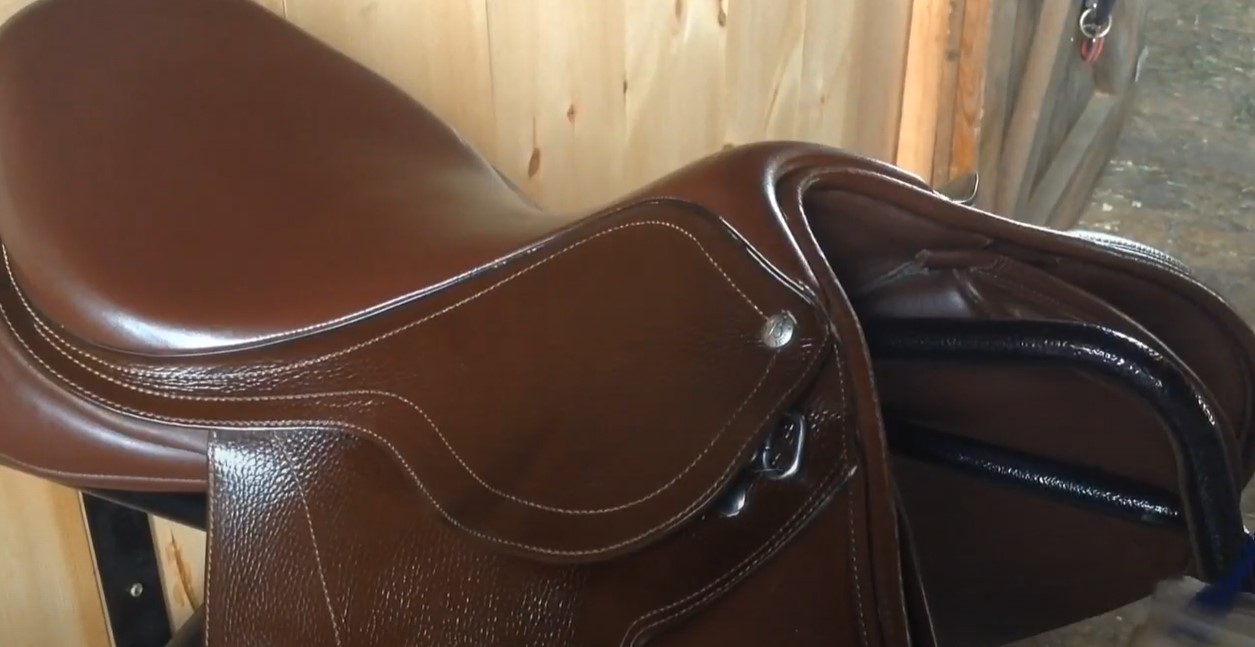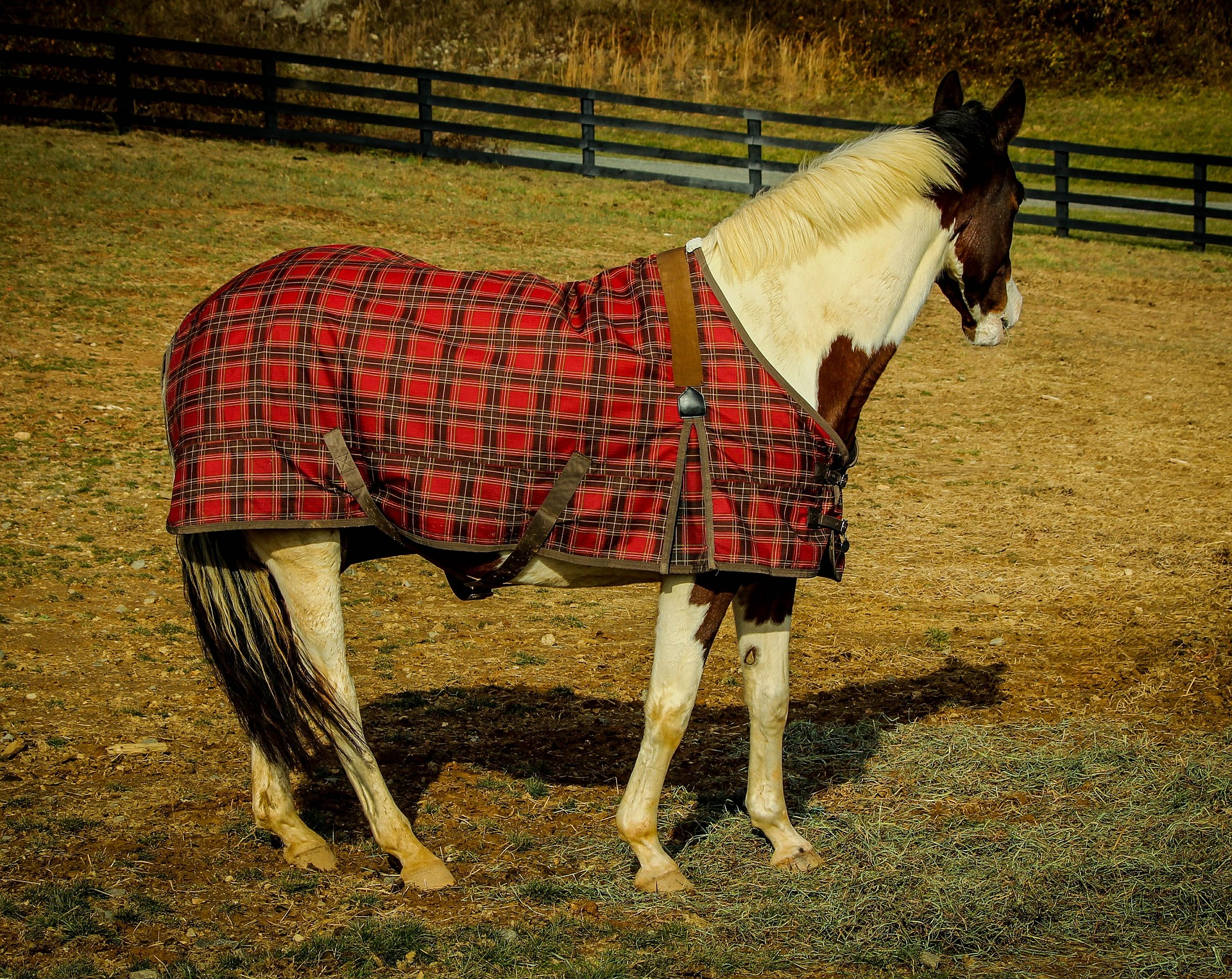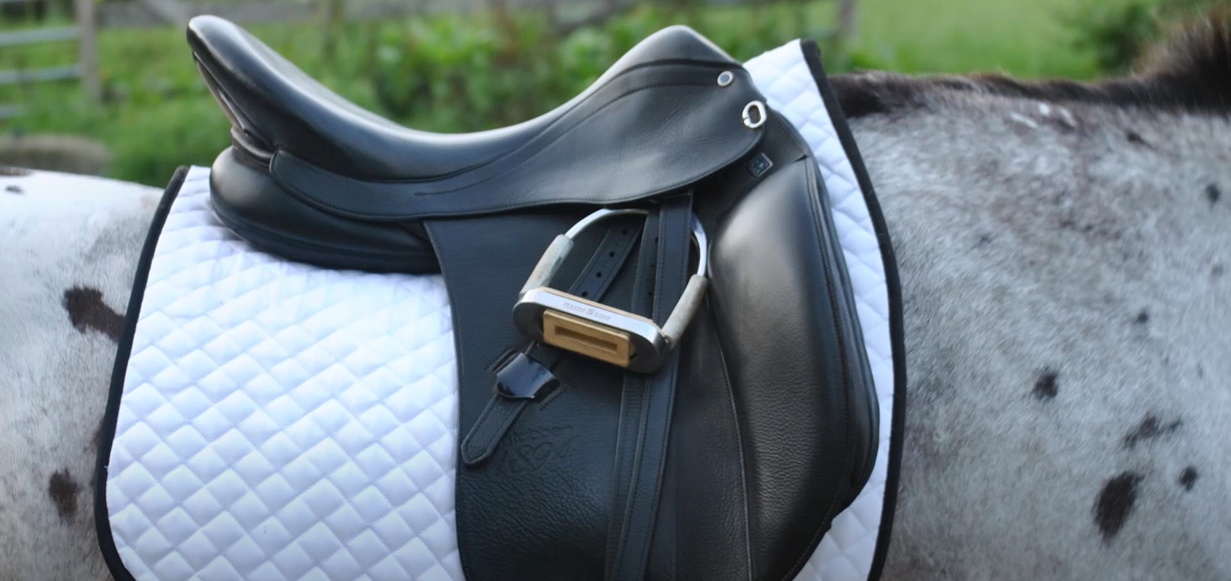Western saddles are big, comfortable and a pleasure to ride in, especially if you're using them for trail riding and ranch work. Western riding can be pretty demanding sometimes so it's important to make sure that your horse is comfortable too. One way to do this is by using a good quality saddle pad when you're riding. In this guide, we'll explore all the things you need to consider when it comes to choosing the best Western saddle pads.
What is a Saddle Pad?
A saddle pad is designed to distribute the weight of rider and saddle evenly over the horse's back while at the same time acting as a shock absorber. When this weight is evenly distributed, it causes fewer pressure points on the horse's back. This makes working under the saddle more comfortable for your horse, therefore improving overall performance.
As well as protecting the horse’s back, a saddle pad will also prevent friction, and protect the saddle from accumulating sweat and grease. A good pad needs to be breathable, with good wicking capability so that it dissipates the heat that's produced under the saddle when you're riding.
How are Western Pads Different from Other Pads?
When it comes to Western saddles, pads need to be pretty thick. This is because Western saddles are a lot bigger and heavier than other saddles so they need to be used with Western saddle pads. Just like English saddle pads are made to fit the round shape of English saddles, Western pads are rectangular to fit the shape of Western saddles.
Another thing that defines a Western pad is its thickness. Western saddle pads are usually much thicker than English style pads for two reasons.
Firstly, western saddles being much heavier than other saddles need to be supported with extra cushioning.
And secondly, Western riders generally spend more time in the saddle when they’re working on the ranch or exploring the trail. A thicker pad provides extra comfort and shock absorption for horses who are under the saddle for long periods.
Western Pad Size and Fitting Guide
A poorly fitting saddle pad will not only cause your horse discomfort but it could also cause your horse to become distracted when you're riding. This can be dangerous to you as the rider and potentially cause injury to your horse's back, so your pad must fit well. Use our guidelines below for advice about sizing and fitting a Western saddle pad.
Sizing
Even if you use the very best Western saddle pad, it won't offer the correct support, comfort and shock absorption if the saddle doesn't fit well. You should never use saddle pads to correct a poorly fitting saddle.
When it comes to selecting the right size pad, the general rule is to use one that's two or three inches longer than your saddle size. When you're checking the size of the pad under your saddle, make sure the pad clears your saddle by at least an inch all the way around. This is to ensure that any fabric seams or edges aren't creating pressure points on your horse's back, under the weight of the saddle.
Fitting
When it comes to fitting the pad correctly on your horse, you should put it over the withers and then slowly slide it back into place. This way you can be sure that everything is smoothed out underneath the saddle with no areas of friction. If the pad fits well then you should be able to pull the center of it up into the gullet so it's not pressed down tight against the withers.
One good way to monitor the fit of both the pad and saddle is by looking closely at the sweat marks left behind after riding. If the sweat is unevenly patched on the pad then consider replacing the blanket or checking the fit of your saddle.
Western Saddle Pad Care and Cleaning Tips
For a saddle pad to keep its shape and form then it needs to be well cared for and doing this correctly will prolong its lifespan. A dirty pad will cause friction and rubbing on your horse's back and this is why you must check and clean your pad regularly. Use our points below for cleaning and maintaining your pad.
Cleaning
Western saddle blankets are made in many different materials so you must follow each individual manufacturer's cleaning instructions. Pads that are made from synthetic materials can generally be put in the washing machine while pads made from natural materials such as wool fleece, will require specialist cleaning.
Always make sure to check manufacturers recommendations before putting a pad in the washing machine. Hanging your pad out in the sun to dry after a wet wash or rinse is a great way to kill off any bacteria that's been acquired through your horse's sweat.
Care
An easy way to maintain your saddle pad is by regularly brushing it over with a stiff brush. This will remove hairs and debris from your pad and prevent fabrics and wool fleece from clumping together. After you've been riding, it's good practice to dry your pad and air it out. An easy way to do this is by draping the pad over your saddle or saddle rack.
Make sure that you leave it wet side up! It's also important to fluff your pad out regularly, especially after cleaning. This prevents compression of the fibers, keeping your pad comfortable and ultimately prolonging its lifespan.
The same care should be taken with your saddles. Be sure to use the best saddle soaps to keep them clean and maintained.
Tips for Choosing the Best Western Saddle Pad

A saddle pad is an important piece of riding equipment so you must use the best one for your needs. To help you find the best Western saddle pad, we've outlined the main things to consider before you make your purchase.
Thickness
When it comes to choosing the thickness of your saddle pad, Western pads need to be quite thick to support the saddle correctly. To determine which is the right thickness for your needs you should consider how long you spend in the saddle, your weight, and your horse's conformation.
The thickness of a Western saddle pad will start at 7/8" and range up to 1. 1/8 inch. It's better to go for a minimum of 1" and you should choose a thicker pad if your horse is carrying a heavy rider, has conformation problems of the back, or regularly works for several hours at a time. A thick pad will provide the most comfort for your horse under these circumstances. If your horse doesn't have and conformation problems and rarely works for more than an hour at a time then you should choose a thinner pad.
Materials
The choice materials for Western saddle pads are ones that are made from natural fibers such as sheepskin, wool and wool felt. These materials contour easily to your horses back while offering the maximum in comfort, heat dissipation and shock absorption. These pads are the most expensive types of pads that require specialist cleaning and generally don’t last as long as synthetic fibers. Particularly wool felt pads, which disintegrate easily over time.
Memory foam pads offer a good level of comfort and are a good alternative to natural fibers. Usually, you can choose between open-cell foam and closed-cell foam with open cell being the more breathable option. Memory foam pads are a bit more economical to buy and will generally last a bit longer than natural fibers.
The most economical pads are made from synthetic materials such as fleece and canvas. Even though synthetic pads are cheaper, they’re pretty durable, easy to maintain and they offer a good level of comfort for your horse.
Special Features
If you have a saddle that keeps slipping, then choose a pad with special none slip features such as neoprene patches, to help keep it in place on the horse's back. If you're riding a lot in a very hot climate or under intense rodeo conditions then choose an extra breathable pad with high wicking capabilities. Also, if you have a horse with high withers then lookout for a pad that has cut out withers to relieve the pressure in that area.
Finally, if you have a horse with special back conformation then lookout for specially contoured pads or gel pads. These will mold to fit your horse's unique shape and the gel pads, in particular, will add extra support where it's needed.
Reviews of the 5 Best Western Pads on the Market
To help you in your search for the best Western saddle pad, we’ve reviewed 5 of our favorites below to get you started.
1. Diamond Wool Contoured Felt Ranch Pad
This is a high quality, thick felt pad from Diamond wool that’s highly rated with ranchers. The thick 1” felt provides the ultimate in comfort and support for tough working conditions. Its contoured shape gives a precise fit and the “wither relief notch” will alleviate pressure on horses with high withers. This pad is high wicking which means it will keep your horse cooler under the saddle.
2. Weaver Leather Contoured Saddle Pad
As well as looking very stylish, this saddle pad from weaver leather is durable and comfortable for your horse. It has a merino wool lining giving it high wicking capabilities while providing a precision comfort fit on your horses back. The outer of the pad is made with a tough Herculon material which is easy to clean, quick-drying and mildew-resistant, making it a great pad to use on the trail. This well-crafted pad has a 1” felt insert, distressed look wear leathers and is available in 6 attractive colors.
3. Weaver Leather Synergy Contoured Performance Saddle Pad
This contoured performance pad from Weaver Leather will easily conform to the shape of your horses back. The leather spine is designed to lift into the saddle gullet creating maximum airflow. It also gives the saddle a more natural fit and prevents the pad from rolling. The half-inch EVA sports foam inserts provide the maximum in comfort and will return to their original shape after use. This is a high-quality saddle pad made with a wool blend, felt liner and New Zeland wool upper and it’s available in 10 attractive colors.
4. The Montana 100% Extra Fine Wool Saddle Pad
This extra fine, wool pad from Montana will be sure to keep your horse dry and comfortable under the saddle. The fine wool has a very high wicking capability and will comfortably conform to the shape of your horses back. This pad comes in 4/4 an 1” thickness and is available in two different colors. This is a durable, long-lasting pad that’s suitable for many different types of Western riding.
5. Tahoe Tack Contoured Canvas Saddle Pad
This is a fantastic budget saddle pad from Tahoe tack. It’s made with a durable, rugged canvas outer, together with 7/8” fleece lining and soft felt padding. It’s a contoured pad meaning that it will fit snugly over your horses back and the concentric stitching provides well-distributed shock absorption. This is a durable, attractive pad with genuine leather wears and it’s available in three sizes and five different colors.
Conclusion
Our top choice when it comes to the ultimate Western saddle pad has to be the Synergy Performance Pad from Weaver Leather. This is a high-quality pad that’s crafted with the finest materials and combined with the latest technology to ensure the comfort of your horse when you’re riding. This is a top of the range pad that's a favorite amongst Western riders, and with ten colors and designs to choose from, you’ll be sure to find your perfect match.
Western saddle blankets are continually evolving with the latest technology to provide the maximum comfort and protection for your horse's back. As well as taking the impact out of pressure points during riding, a saddle pad will also help to keep your horse cool and comfortable during a workout. A good pad is an essential piece of tack that's vital for the welfare of the horse's back during riding. This is why it’s worth investing in the very best western saddle pads to ensure the comfort of your horse.









